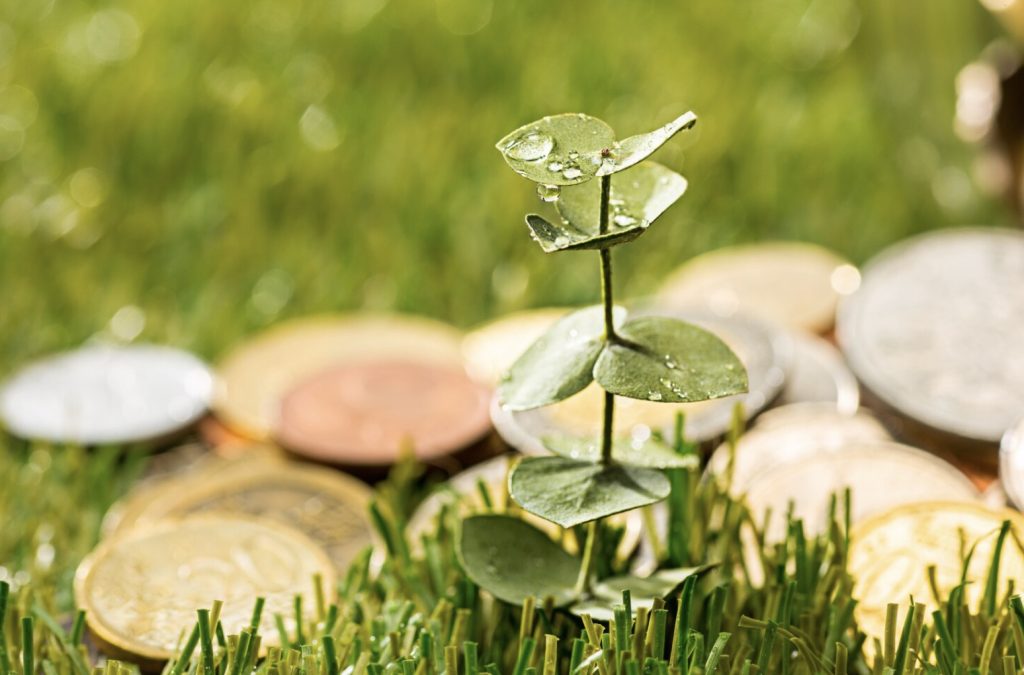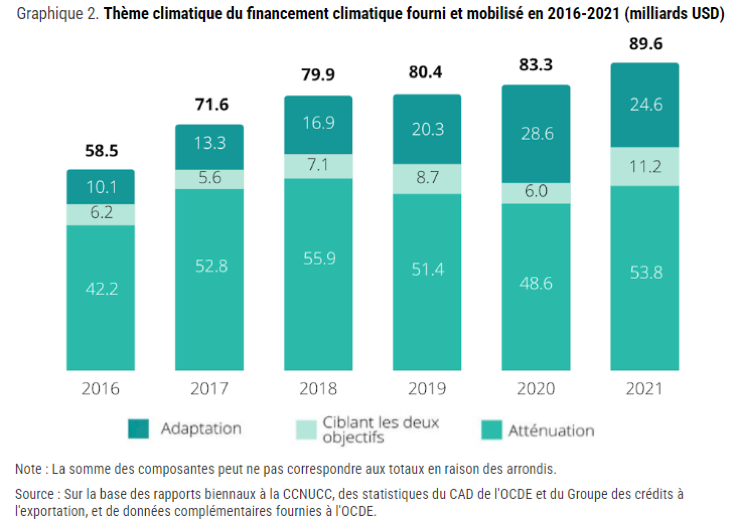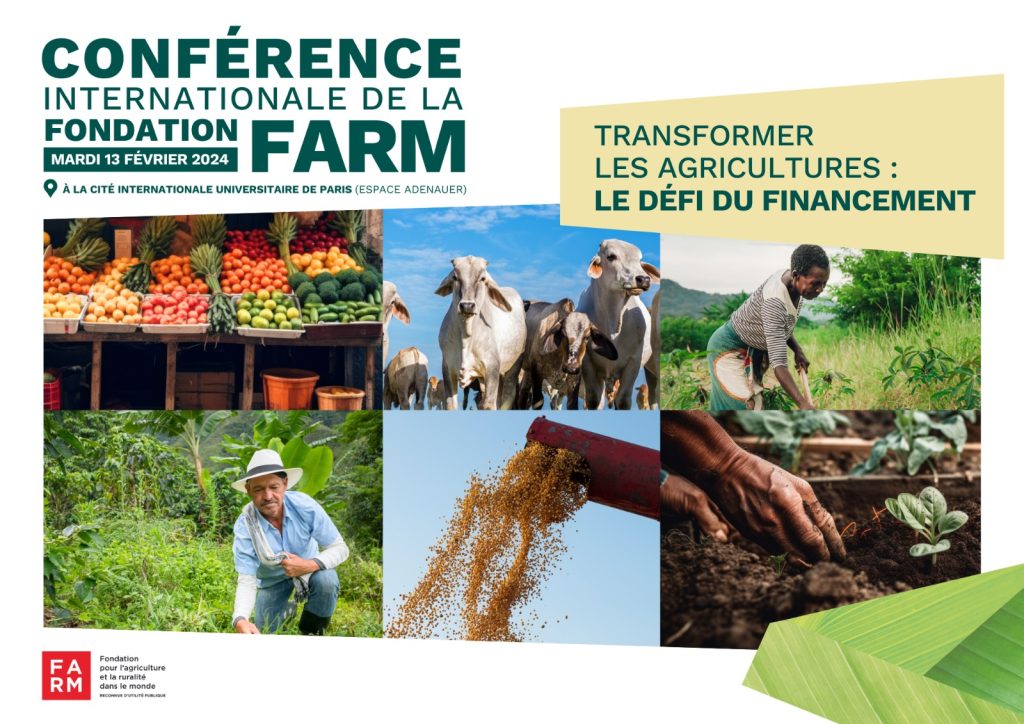COP28: the challenges of climate financing
As COP28 opens and the subject of financing is at the heart of discussions, the FARM Foundation gives the floor to David Levai, associate researcher at IDDRI and specialist in climate negotiations.

The 28th The Conference of the Parties to the United Nations Framework Convention on Climate Change is being held in Dubai, United Arab Emirates, until December 12, 2023. Among the issues (Watch the FARM editorial in video), this meeting is an opportunity to conduct the first global assessment of the commitments made through the Paris Agreement at COP21. Among them, the commitment of developed countries to developing countries to provide financial resources for adaptation and mitigation – climate finance – will be at the heart of the discussions. This issue directly affects the agricultural sector, which must begin its transition to models that emit less greenhouse gases, ensure its resilience to the consequences of climate change, while guaranteeing access to sustainable food. According to the Climate Policy Initiative, on the African continent, agriculture would be the 2th priority sector in terms of financing needs, both for adaptation and for mitigation, where it is overtaken by the energy sector[1].
FARM Foundation: In the Paris Agreement, developed countries committed to providing US$100 billion ($) per year to developing countries for climate change mitigation and adaptation. Has this climate finance been met?
David Levai : We know for sure that we did not reach this 100 billion in either 2020 or 2021. According to the latest OECD figures, climate finance reached 89.6 billion in 2021, so we were 10 billion short. However, developed countries – who are responsible for this obligation – have tried to reassure people that the target for 2022 and 2023 will be met. Even though, in reality, there is no tangible evidence to support this, the OECD estimates that it was reached in 2022.[2][3]This means that we are at least two years behind schedule.

Source : OECD 2023.
FARM Foundation: Would this 100 billion $ – if reached – cover all the financing needs necessary to address climate change in developing countries?
David Levai This annual envelope represents only climate finance from developed countries to developing countries. This objective was set at COP15 in Copenhagen, then renewed in 2020 for the period 2020-2025 and therefore expires in 2025. Discussions have already begun and will continue during COP28 on setting a new target and its terms and conditions : how will it be quantified, what will it include, how will it be achieved, which countries will contribute? However, we will have to wait until COP29 in 2024 to definitively conclude on these points.
To return to the quantified needs, they are much higher than the 100 billion $.study The most consensual study on the subject is that carried out by Vera Songwe, Nicholas Stern and Amar Bhattacharya. It was presented at COP27 in Egypt. It assesses the investment needs of developing countries (excluding China) to combat climate change and enable sustainable development. 1,000 billion $ per year, excluding the needs of developed countries[4].
Another important question that will have to be raised is: which countries will be developing in 2025? We cannot consider ad vitam aeternam that the countries defined as developing in 1992 – the year the Climate Convention was born at the Earth Summit – are still all developing today. Several countries considered to be developing are emerging, major and organized powers such as South Africa, Indonesia, Vietnam, China, or Brazil. It will be necessary to question their needs for climate financing from the countries of the North as well as their possible contribution to this financing.
FARM Foundation: Which countries are contributing to and receiving this climate funding?
David Levai : By definition, contributing countries are developed countries. The countries providing the most climate finance are Japan, Germany, and France.[5]. On the other hand, Canada and the United States remain far behind. To give you an idea, The United States has promised to reach 5.7 by 2024 – the end of Joe Biden's first term. billion in climate finance. By comparison, the European Union had contributed 24.5 billion in 2019.
In terms of destinations and very generally, climate finance, particularly adaptation finance, goes primarily to the most vulnerable countries, i.e. small islands, countries affected by heat waves, droughts, floods, hurricanes, etc. They also fuel public investments, particularly in renewable energies, and therefore towards countries that are developing their solar energy production and distribution infrastructure (wind turbines, in particular).
FARM Foundation: How is climate finance distributed between mitigation and adaptation? And which sectors benefit from it?
David Levai : The idea was to allocate about 40 % of the 100 billion $ to adaptation. In reality, only 23 billion were paid in 2021[6], that is, half of the initial objective. Despite the need and the urgency, adaptation funding even decreased by 14 % between 2020 and 2021. However, COP decisions have been calling for a doubling of this funding for several years.
The types of financing allocated to mitigation will be very different from those intended for adaptation. They will finance profitable, long-term, and revenue-generating activities such as conversion to renewable energy. Conversely, adaptation-related activities involve systemic changes that are difficult to implement and incur significant costs across several small projects. like the transition to an agricultural system adapted to climatic events.
Between 2016 and 2021, 31% of climate financing is dedicated to the “energy” sector, 14% to the “transport and storage” sector, 9 % in the “agriculture, forestry and fishing” sector and 8 % in the “water, supply, sanitation” sector[7].
FARM Foundation: As you said, it will be necessary to increase climate financing in the coming years. What new levers could be used to achieve this?
David Levai : Beyond the negotiations as they take place at the United Nations, it is essential to unlock new sources of funding.
Moreover, We absolutely must stop financing what is considered grey finance., that is, activities that are carried out at the expense of climate action. Money invested in these activities – for example, oil exploration – cancels out investments related to mitigation and adaptation, since we continue to emit greenhouse gases. conversion of fossil fuel subsidies[8] is therefore a priority axis, although vulnerable countries and civil society have been fighting on these issues for years without real success.
One of the questions raised at the last COP by Mia Mottley – Prime Minister of Barbados – and taken up by Emmanuel Macron during the “ Summit for a new global financial pact » on June 22 and 23, 2023, is that of the international taxationThere are several options: taxing fossil fuels and removing fossil fuel subsidies, taxing air and sea transport, etc.[9]. If we want to raise more funds, it is necessary to put in place mechanisms that automatically produce this financing rather than relying on the supposed generosity of the leaders of the major economies. This is not a gesture of goodwill but an existential obligation. However, we will probably have to wait until COP30 to see these discussions come to fruition. There is a clear gap between the needs highlighted by the scale of climate events and the needs of transition, and the ability to raise funds.
FARM Foundation: Precisely, what are the financing possibilities for developing countries, least developed countries and small island states in a context of debt crisis in the countries of the South, a low capacity to borrow and a global financial architecture that is not adapted to these needs as we are reminded the Bridgetown Initiative announced at COP 27 and carried by Mia Mottley [10] ?
David Levai : Indeed, since the last COP, these issues around debt and the reform of financial institutions have been at the heart of the agenda. Although they have not yet been concluded, the IMF and the World Bank have managed to mobilize more financing. The question ofease the financial conditions imposed on these countries, reschedule or reallocate debts, suspend debt service in the event of a major climate event, is still under consideration, and systems are beginning to be put in place. For years, international negotiations were more of a political battle of posturing: the countries of the South wanted more money, while the countries of the North wanted to give less. Recently, we have entered a phase of much more subtle and advanced discussions concerning the concrete implementation.
FARM Foundation: Risk is one of the main barriers to transition investment in developing countries. How can we create market confidence in these countries, as you suggest in your article? your note regarding the “Summit for a New Global Financial Compact”, All in mobilizing private investments?
David Levai : A first step is to equip yourself with technical mechanisms, either insurance or risk pooling. In other words, to dilute the risk between several countries, rather than investing in only one country. It is also necessary to change the perception of political-economic riskFor example, Nigeria has a borrowing rate on the markets 3 to 5 times higher than Greece, which has nevertheless defaulted. The two countries obviously do not have the same security situation and investment context.
The idea of the reform of the financial system is to put in place means, instruments and tools to avoid financing traps and debt crisis in the countries of the South. It will take time and will be difficult to implement, but once these systems are there, private investors will become more involved.
There are also innovations such as the JET-P (Just Energy Transition PartnershipThe first was granted to South Africa to finance a major transition plan, since the country is heavily dependent on fossil fuels (coal).[11]. The aim was to both mobilize public money from developed countries while bringing in private investors. The JET-P announced for Indonesia at COP27 included 10 billion $ of public financing, coupled with 10 billion of private financing.[12]The ambition was to invest massively in order toamplify the transition, convince private investors to follow and mobilize domestic financing, that is, money that already exists in the country. Indeed, the financialization of the economy has been implemented through fossil fuels, and these fuels are pulling the economy in their direction. However, from the moment investments move towards cleaner sectors, they will further support the transformation. Obviously, This mechanism is not applicable to the most vulnerable countries but rather to emerging economies such as Brazil, Indonesia, South Africa, India or Vietnam, where significant domestic financing resides.
FARM Foundation: In conclusion, what commitments can we expect from this COP28 regarding financing?
David Levai : In the formal agenda, that is to say what must be decided during the COP, there will be:
- The issue of the "loss and damage" fund, the draft resolution of which, approved by the transitional committee, is to be discussed at the COP. Developed countries fear creating a mechanism similar to the Green Climate Fund, which was both very complicated and time-consuming to set up, while developing countries want governance of this fund to be returned to the beneficiaries. If a resolution is reached, it will be a political victory, but it will not include more information on contributors, contributions, frequency, etc.
- The new quantified target for climate finance, although this discussion will not come to fruition until next year.
- And finally, the global review of commitments made at COP21, which includes a financing dimension. This is where we can hope to hear strong political messages on the mobilization of domestic financing in all countries, on the reform of multilateral institutions, by resonating with work taking place outside of the COP.
Beyond these formal negotiations, the COP has a completely different scope. We should see the emergence strong demands from vulnerable countries, mainly led by Mia Mottley, Prime Minister of Barbados and William Ruto, President of Kenya, and even by Luiz Inácio Lula da Silva, President of Brazil[13], concerning the need to reform international finance, to integrate the needs for adaptation and mitigation and for development – inseparable from climate issues. This is where the real challenge of the COP lies, beyond the negotiations: What will be the impact of political messages, particularly in terms of financing and climate justice, outside the walls of the COP? to go and shake up other institutions, like the Bridgetown initiative ?

If you would like to delve deeper into the topics of financing for the transformation of agriculture around the world, Register now for the FARM Foundation International Conference on Financing, which will take place on February 13, 2024 in Paris..
Sources
[1] According to their analysis of 29 African countries (excluding South Africa) that reported their financing needs by sector, 27% of mitigation financing needs and 8% of adaptation financing needs relate to the "Agriculture, forestry and other land use" (AFOLU) sector. For more information: https://www.climatepolicyinitiative.org/wp-content/uploads/2022/06/Climate-Finance-Needs-of-African-Countries-1.pdf
[2] This estimate is based on "preliminary and as yet unverified data available to the OECD to date." Source: https://www.oecd.org/environment/growth-accelerated-in-the-climate-finance-provided-and-mobilised-in-2021-but-developed-countries-remain-short.htm
[3] In their 2022 report, Vera Songwe, Nicholas Stern and Amar Bhattacharya state that the target could be achieved only by 2023. Source: https://repository.uneca.org/bitstream/handle/10855/49154/b12021660.pdf?sequence=1
[4] In its latest report, UNEP even estimates that the adaptation financing gap is currently between US$194 billion and US$366 billion per year, and that adaptation financing needs are 10 to 18 times greater than current flows of international public adaptation financing. Source: https://reliefweb.int/report/world/un-manque-de-financement-et-de-preparation-linsuffisance-des-investissements-et-de-la-planification-en-matiere-dadaptation-au-climat-expose-le-monde-au-danger-resume-analytique
[5] Source : https://www.wri.org/insights/developed-countries-contributions-climate-finance-goal
[6] For an average of only 17.6 billion US dollars over the period 2016 – 2021 according to OECD figures. Source: https://www.oecd-ilibrary.org/sites/b0878862-en/1/3/2/index.html?itemId=/content/publication/b0878862-en&_csp_=f5a4cedc035a681198e27d36241cf301&itemIGO=oecd&itemContentType=book
[7] Source : https://www.oecd-ilibrary.org/sites/40558351-fr/1/3/1/index.html?itemId=/content/publication/40558351-fr&_csp_=d8e1e5e8865d39c464f957a14f83ae40&itemIGO=oecd&itemContentType=book
[8] https://www.imf.org/en/Blogs/Articles/2023/08/24/fossil-fuel-subsidies-surged-to-record-7-trillion
[9] Oxfam also proposes a climate wealth tax or dividend tax on companies that fail to comply with the Paris Agreement, based on the findings of their latest report on climate inequality. Source: https://www.oxfamfrance.org/rapports/egalite-climatique-une-planete-pour-les-99/
[10] The Bridgetown Initiative was launched by Barbados Prime Minister Mia Mottley at COP27 in Sharm El-Sheikh and is now supported by many countries in the Global South. The initiative contains several proposals to reform the global financial architecture to better address the climate and development challenges of countries in the Global South.
[11] A Just Energy Transition Partnership (JET-P) was concluded in November 2021 at COP26 between France, Germany, the United Kingdom, the United States, the European Union, and South Africa – the beneficiary of this funding. The first financial commitments were made at COP27. For more information: https://www.afd.fr/fr/actualites/afrique-du-sud-300-millions-euros-soutenir-transition-energetique-juste
[12] Source : https://www.undp.org/indonesia/projects/indonesia-just-energy-transition-partnership-jetp
[13] On November 23, 2023, the Brazilian Minister of the Environment announced that the Brazilian President will propose a fund to preserve tropical forests at COP28. Source: https://www.lemonde.fr/planete/article/2023/11/24/cop28-le-bresil-propose-la-creation-d-un-fonds-visant-a-proteger-les-forets-tropicales_6202030_3244.html
